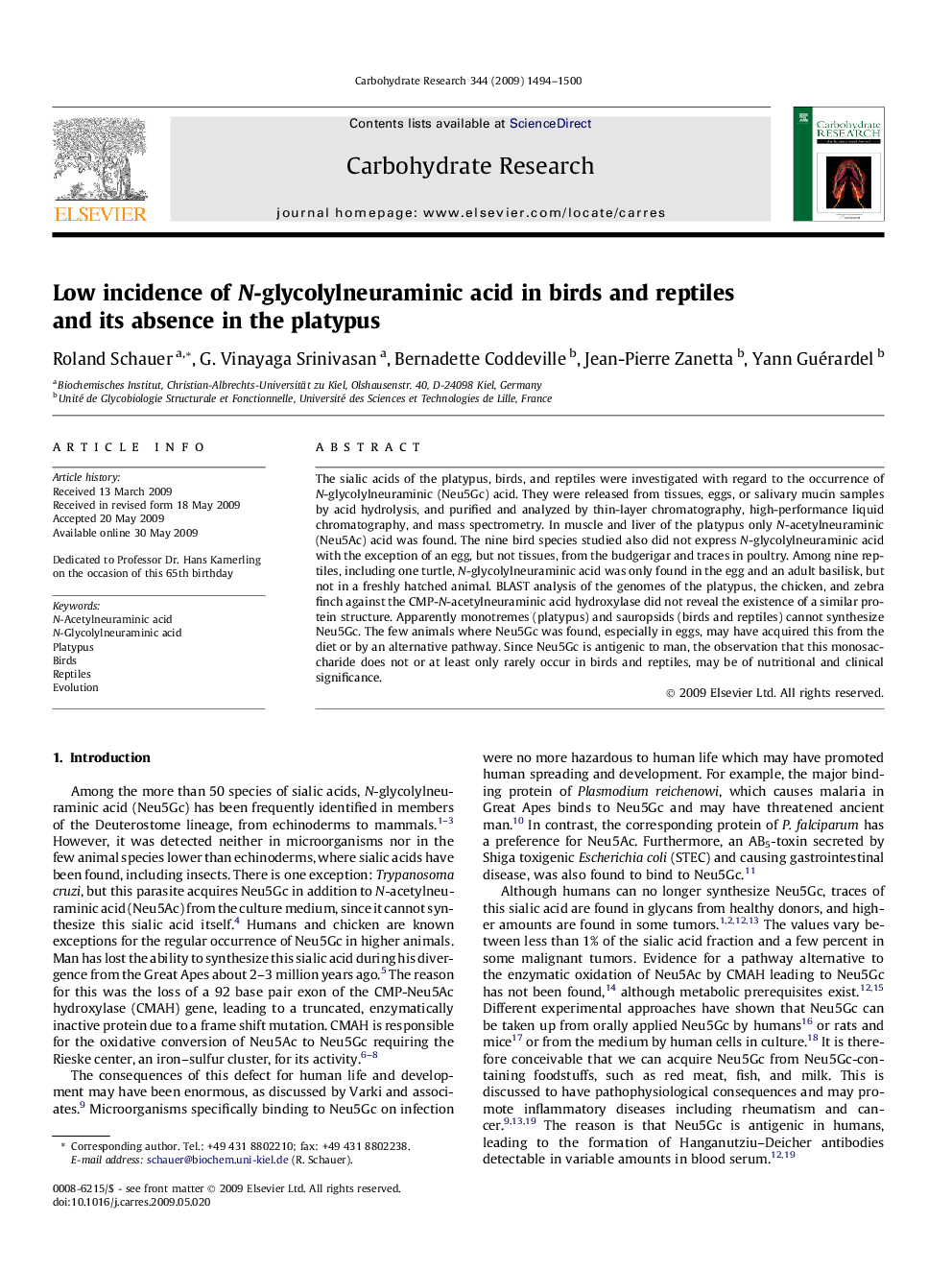| Article ID | Journal | Published Year | Pages | File Type |
|---|---|---|---|---|
| 1388788 | Carbohydrate Research | 2009 | 7 Pages |
The sialic acids of the platypus, birds, and reptiles were investigated with regard to the occurrence of N-glycolylneuraminic (Neu5Gc) acid. They were released from tissues, eggs, or salivary mucin samples by acid hydrolysis, and purified and analyzed by thin-layer chromatography, high-performance liquid chromatography, and mass spectrometry. In muscle and liver of the platypus only N-acetylneuraminic (Neu5Ac) acid was found. The nine bird species studied also did not express N-glycolylneuraminic acid with the exception of an egg, but not tissues, from the budgerigar and traces in poultry. Among nine reptiles, including one turtle, N-glycolylneuraminic acid was only found in the egg and an adult basilisk, but not in a freshly hatched animal. BLAST analysis of the genomes of the platypus, the chicken, and zebra finch against the CMP-N-acetylneuraminic acid hydroxylase did not reveal the existence of a similar protein structure. Apparently monotremes (platypus) and sauropsids (birds and reptiles) cannot synthesize Neu5Gc. The few animals where Neu5Gc was found, especially in eggs, may have acquired this from the diet or by an alternative pathway. Since Neu5Gc is antigenic to man, the observation that this monosaccharide does not or at least only rarely occur in birds and reptiles, may be of nutritional and clinical significance.
Graphical abstractFigure optionsDownload full-size imageDownload as PowerPoint slide
